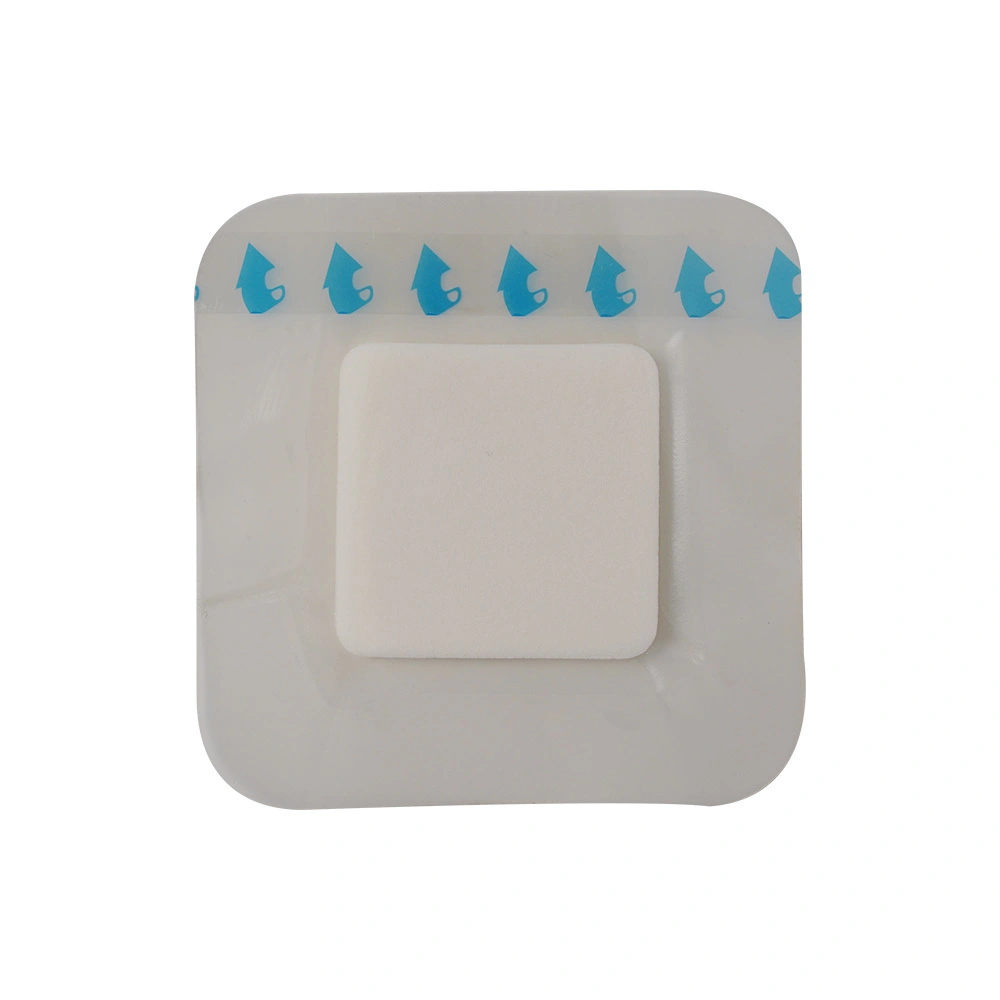A leading manufacturer with 20 years experience for external use plaster and wound dressing, medical adhesive materials, etc
salesmanager@whhuawei.com.cn +027-88868920
China Professional Ultra-Thin Border Adhesive Dressing Hydrocolloid Foam Dressing 6X6 in for Medium to Heavy Exuding Wounds Factory
Hydrocolloid foam dressing is a type of wound dressing that has been gaining popularity in recent years due to its many advantages.
Structure
Hydrocolloid foam dressing is a multi-layered dressing that includes a gel-forming agents, polymer adhesives, and foam. The foam layer provides cushioning and promotes absorbency. The adhesive layer sticks to the wound bed while maintaining a moist environment. The waterproof outer layer protects the wound from external contaminants and prevents leakage.
Advantages
-absorb moisture from the wound, preventing the formation of exudate and reducing the risk of bacterial infection. The hydrocolloid border keeps the dressing in place, preventing it from shifting or falling off, at the same time absorbs the extra exudates from the wound edge. and this makes it ideal for use on areas of the body that are prone to movement, such as arms and legs.
- promotes faster healing times. by creating a moist environment on the wound bed, the dressings stimulate tissue regeneration, leading to a reduction in scar formation. Additionally, the cushioning effect of the dressings protects the wound from further trauma, accelerating the healing process.
-ease of use. The dressings are self-adhesive, making them easy to apply and remove. They are also non-invasive, meaning there is little to no pain involved when changing dressings.
Characteristics
The highly absorb patch have several unique characteristics that distinguish them from other types of dressings.
Firstly, they are highly absorbent, making them ideal for wounds that produce a lot of exudate.
Secondly, they create a moist environment on the wound bed, which stimulates tissue regeneration and promotes faster healing times.
Finally, they are waterproof, preventing water, dirt, and bacteria from entering the wound.
Applicable scope
- pressure ulcers, diabetic ulcers, surgical wounds, and burns.
They are also suitable for use in areas of the body that are prone to movement, such as the elbows, knees, and shoulders. Hydrocolloid foam dressings should not be used on wounds that are infected or have deep tissue damage.
FAQs
1. How often should hydrocolloid foam dressings be changed?
Hydrocolloid foam dressings should be changed every three to seven days, depending on the level of exudate. If the dressing becomes saturated before this time, it should be changed sooner.
2. Can hydrocolloid foam dressings be used on infected wounds?
Hydrocolloid foam dressings should not be used on oozing or infected wounds. If the wound is infected, it should be treated with an antibacterial cream or ointment before applying a dressing.
3. Do hydrocolloid foam dressings cause skin irritation?
Hydrocolloid foam dressings are hypoallergenic and designed to reduce skin irritation. However, some people may still experience skin irritation, particularly those with sensitive skin. If skin irritation occurs, the dressing should be removed and an alternative dressing used.
PRODUCTS
- Silicone Foam Wound Dressing
- Hydrocolloid wound dressing
- Surgical Incise Drape
- Pimple Acne Patch
CONTACT US
Tel : +86-27-88868920,82351611
E-mail : Coco: sales2@whhuawei.com.cn
Huawei Technology Co., Ltd.
Enterprise adheres the mission of " focus on green technology, care of life and health", realize the goal of serving the community and benefiting the human health.

